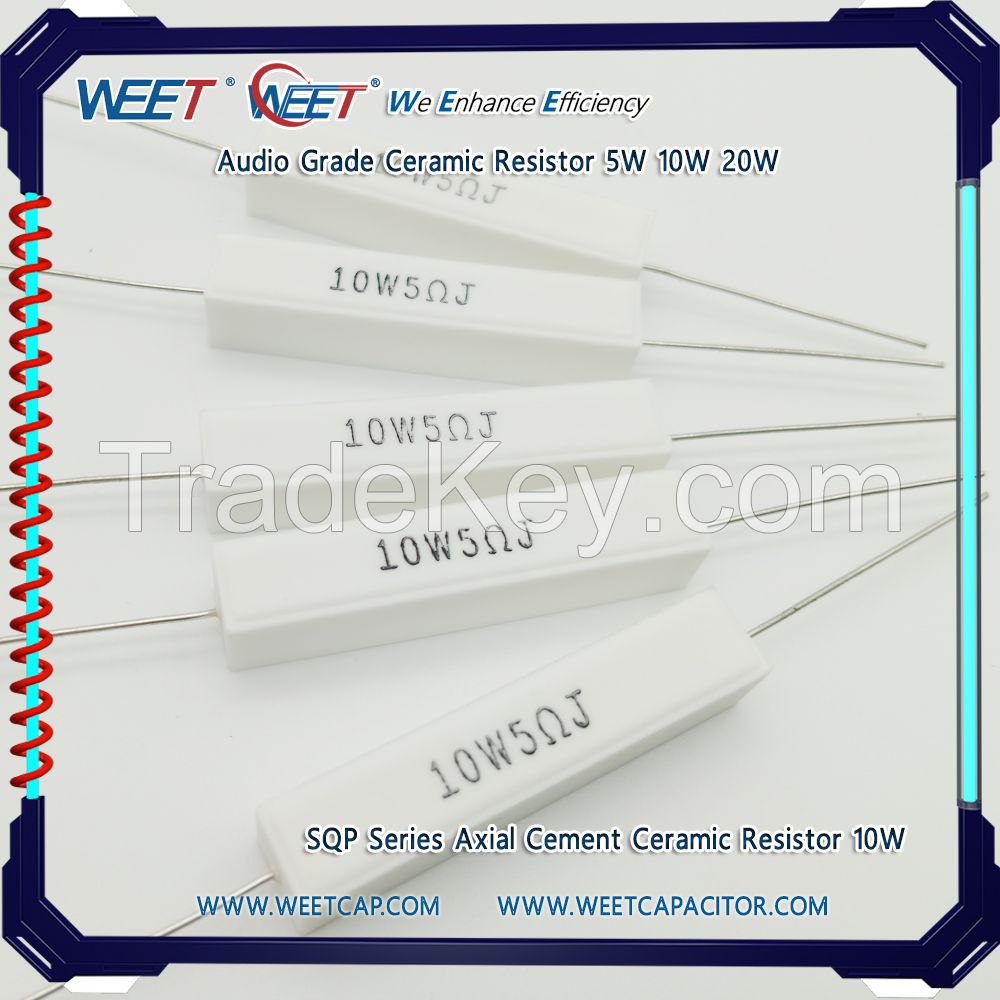
FOB Price
Obtener el precio más reciente|
Minimum Order
Place of Origin:
-
Price for Minimum Order:
-
Minimum Order Quantity:
1 Piece
Packaging Detail:
bulk
Delivery Time:
14days
Supplying Ability:
-
Payment Type:
T/T, Western Union, Money Gram, PayPal
Persona de contacto Tess
Dongguan, Guangdong
FEATURES:
Cement Ceramic resistors are manufactured by winding the ceramic
rods with metal alloy resistance wire and put it in a fireproof
ceramic box then concrete with non-flammable and heat-resistant
cement.
Excellent heat resistance, low temperature coefficient of
resistance and linear change.
It can withstand short-term overload, low noise, and the resistance
value has not changed over the years.
Good explosion-proof performance and protection.
Difference between cement resistor and ordinary resistor
1. The resistance of the conductor to the current is called the resistance of the conductor. Resistance is a physical quantity. In physics, it indicates the resistance of the conductor to the current. The greater the resistance of the conductor, the greater the resistance of the conductor to the current.
2. There are many types of resistors, usually divided into fixed resistors and variable resistors, and fixed resistors can be subdivided into many types according to the use of resistor materials.
3. The difference between cement resistance and ordinary resistance is that the materials are different. Resistors can be divided into carbon film resistance, cement resistance, metal film resistance and wire wound resistance.
4. Resistors can be divided into cylindrical resistors, tubular resistors, disk resistors and planar resistors according to their structural forms; According to the different forms of outgoing lines, resistors can be divided into axial lead type, radial lead type, same direction lead type, leadless type and so on.
5. If divided by accuracy, the resistors are ± 5%, ± *0%, ± *0%, ±
0.1%, ± 0.2%, ± 0.5%, ± 1% and ± 2%. Therefore, there are many
classification methods for resistors, which can be classified into
many kinds of resistors from different angles.
Detailed Specifications:
| Power Rating *0℃ | 1W & 2W | 3W & 4W | 5W | 7W | *0W | *5W & *0W |
| 3WS | 5WS | 7WS | *0WS | *5WS | *5W - *0W | |
| Series Number | SQP | |||||
| Operating Temp. Range | **5℃~ ***5℃ | |||||
| Max. Working Voltage | **0V | **0V | **0V | **0V | **0V | **0V |
| Max. Overload Voltage | **0V | **0V | **0V | ***0V | ***0V | ***0V |
| Dielectric Withstanding Voltage(AC) | **0V | **0V | **0V | ***0V | ***0V | ***0V |
| Value Range ±5% (Ceramic Core) | 0.1Ω - *7Ω | 0.5Ω - **0Ω | 0.1Ω - **0Ω | |||
| Value Range ±5% (Metal Oxide Film) | *0Ω - **0KΩ | 1KΩ - *0KΩ | 1KΩ - *0KΩ | |||